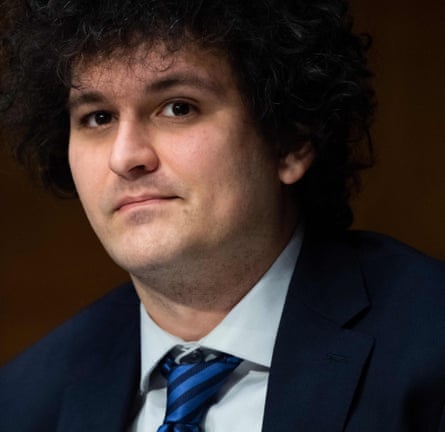
Sam Bankman-Fried, the former chief executive of the collapsed crypto exchange FTX, has claimed the company he founded is still solvent, even as its new boss, who oversaw the final days of Enron, begins the formal bankruptcy process.
In a series of tweets posted overnight on Tuesday, Bankman-Fried insisted the company had about $9bn (£7.6bn) of assets, in a mixture of semi-liquid and illiquid holdings, while owing customers only $8bn.
The tweets implicitly double down on his early claim that his company’s holdings of “serum”, a token FTX controls with a current market cap of $80m, is in fact worth $2bn.

“A few weeks ago, FTX was handling ~$10bn/day of volume and billions of transfers,” he wrote. “Here’s where things stand today, roughly speaking,” he said, before saying the company had $5.5bn of “semi” liquid assets and $3.5bn of “illiquid” assets. “And yeah, maybe that $9bn illiquid [at market prices] isn’t worth $9bn. [On the other hand] – a month ago it was worth $18bn.”
Bankman-Fried acknowledged “you’ve all seen this”, since the numbers he cited had already been revealed in an internal spreadsheet published by the Financial Times on Saturday, apparently created by Bankman-Fried himself on Thursday 10 November, the same day he apologised for its huge collapse in value earlier in the week.
However, that spreadsheet also suggested some of the “less liquid” $5.5bn could prove hard to turn into cash for the company’s creditors. More than $2bn of the assets the company holds are in a crypto token called serum, the underlying token of a decentralised exchange launched by FTX in 2021.
Despite valuing its holdings of the token at $2.2bn, and claiming they were worth more than $5bn only a few weeks earlier, the total implied market capitalisation of all freely trading serum is only $80m. It would be hard for FTX or its creditors to sell 25 times more serum than had ever previously been traded at anywhere near the current market price, or at all.
Serum’s market value is also closely tied to the fortunes of FTX. Although the serum exchange is “decentralised”, it is in practical terms controlled by FTX, which holds the vast majority of governance tokens and the right to mint new ones – a right it has already exercised twice in the past.
Despite being ousted as the chief executive, Bankman-Fried continues to try to raise capital for a rescue package for the exchange. “What can I try to do? Raise liquidity, make customers whole, and restart. Maybe I’ll fail. Maybe I won’t get anything more for customers than what’s already there,” he said.
“I’ve certainly failed before. You all know that now, all too well. But all I can do is to try. I’ve failed enough for the month. And part of me thinks I might get somewhere.”
The wider fallout of the collapse of FTX is ongoing. On Monday, the crypto exchange BlockFi warned customers it had “significant exposure to FTX” due to loans to the group and assets held on the exchange, and on Tuesday reportedly began planning a wave of layoffs and a potential bankruptcy filing.
On Wednesday, the crypto exchange Genesis “made the difficult decision to temporarily suspend redemptions” from the company’s lending business after a series of withdrawals from the service. Genesis said the cause of the withdrawal freeze was a liquidity crunch.